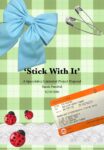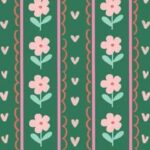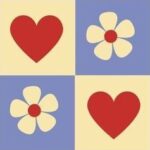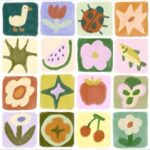Regardless of the content of each venue, which ultimately the enjoyment of is up to personal opinion, I want to use the trip to Glasgow as a way to get me to think of how an archive or a collection is presented. Ultimately despite being a generative project that doesn’t yet feature any artwork (it is created as part of the process of my workshops), I am still proposing a speculative project that engages with themes of archiving and memory. In knowing that I want there to be some form of record of the events of my network, even if digital, I need to consider how the varying documents and artworks will be perceived from an outside perspective, just as if it were a physical archive in a museum or gallery. The online archive is a relatively new thing and so the physical archive is still valuable as research for me.
The Hunterian Museum
Beginning with the Hunterian Museum I found that they had a tendency to link entire collections together by subject grouping or content grouping instead of a chronological pathway through their archive. This allowed them to begin to address the Colonial context and origin of a lot of their collection, calling it ‘discomfort’ which I do feel like undermined the severity of the issue in ethnographic collections, whilst still keeping it evident where, or more specifically who, the collections came from. In a gallery context I can liken this to be having artworks grouped by artist instead of theme or period, but I do feel like this type of curation is very specific to archives that cannot separate their contents from their traumatic acquisition. I do not feel like this type of curation would translate well to either my project or a situation where the ‘donators’ don’t need to be addressed. It feels very circumstantial.
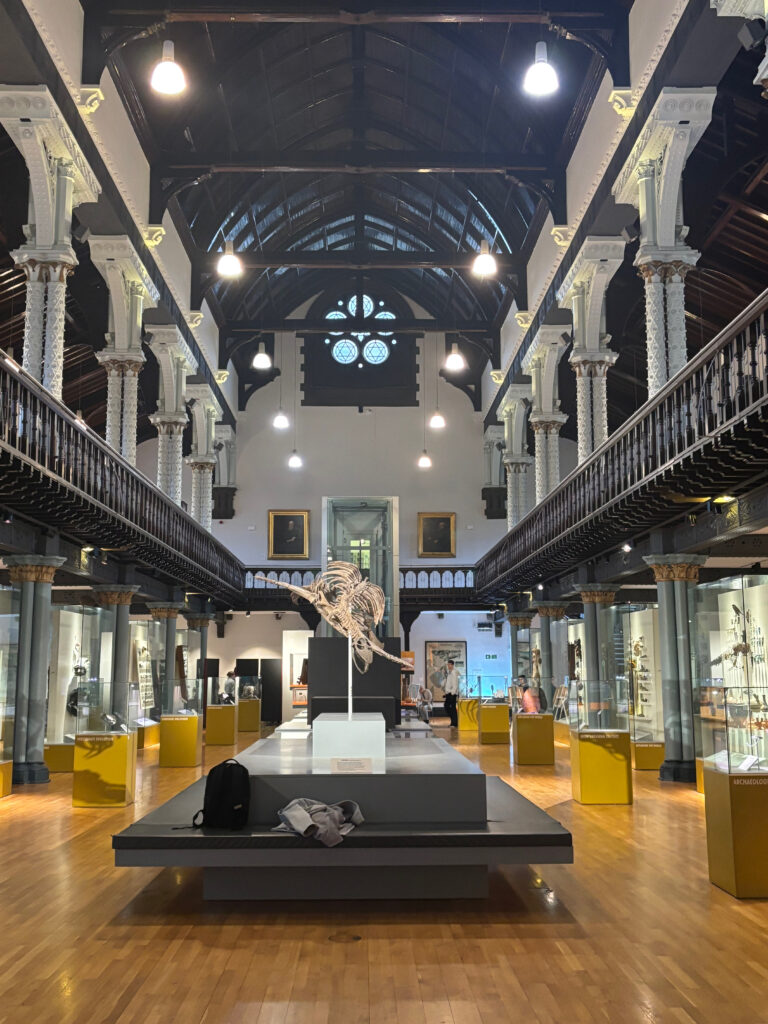
The Hunterian Art Gallery
The Hunterian Art Gallery’s main collection has equally just undergone a restructuring and rehanging. The first room now has a hanging based on the traditional gallery wall, in which works are placed above and below each other covering entire walls with their respective information omitted. This gallery compromised slightly here, instead opting to have a key at the side so the viewer could still track which artwork was which. I feel conflicted about this design. On the one hand aesthetically I quite enjoy how chaotic the work appears. As evident in my project I am a maximalist and I like how the works are visually considered together so it becomes more of an event to look at them. It feels more like a showcase and more as if you are flicking through the contents of the gallery to scope the breadth of what they have. On the other hand I dislike having to constantly flick back and forth to decipher what you are looking at. If the gallery was busier this would become a near impossible task. Each work isn’t given its due attention as a result of the constant competition either side and it is hard to focus. That, in combination with the random gaps and spaces on the walls where ‘potential’ work could go made the experience frustrating. This tells me that in the curation of my own archive, whilst work for my project is being generated, I still need to allow space for everyone’s practice to have their own moment. I need to balance the emptiness with the spaces.
The rest of the gallery curated by theme I found much more successful and accessible to the viewer. The colours of the walls complimented what was placed on them, allowing the work to shine, and the mix of media and artist present in each room made for a much more engaging experience. You were given the time and space to consider each work in its own right as well as being given the information to research the artwork later in your own time. This is much more how I would like to group the work from my workshops that goes into my archive. Whilst still keeping the scrapbook style, I want the art to be accessible visually and correctly recorded.

Tramway
Tramway functions very differently to both the spaces above in the way that the main large hangar only features one exhibition at a time expanding across the entire space. This automatically makes the space link, something the previous two locations didn’t have the luxury of. The exhibition on was a retrospective of the practise of Scottish artist Maud Sulter in collaboration with their estate. Titled You are my kindred spirit, the exhibition uses projection to display otherwise fragile photographs from the archive as well as a variety of forms of projected video. I really like how the space is navigated through with areas of seating where you are encouraged to spend time contemplating the work, as well as larger broader areas where you can experience the videos in their entirety. It makes me wonder if the fact that all of the artwork my archive will host will be created with the same premise will make it automatically link or if I will have to reduce the everyday into smaller subsequent categories? It was also very interesting to hear from curator Claire Jackson about some of the difficulties that the space encounters being so open. In conversation with her afterwards Harry Mayston and I talked asked her about how she works directly with the artists. She explained that most of the time this venue is the largest that they have worked and so it very much is a negotiation between what they (the artist) have done previously and what they want to do now. Normally the space isn’t as divided as with Maud Sulter’s work and instead the artist does one central massive work. I really like how the curation arises from this dialogue and although a venue like this is not appropriate for my project in the slightest, I do want to take this organic approach of seeing the curation grow from Tramway’s approach.

In doing this comparison of sites I am able to see just how varied working with an archive can be, and how I want to progress with an artist-centred approach using what is directly created to inform how I archive it. This avoids any ‘top-down’ authoritarian decisions that would reduce the creativity of my network. Going forward as I begin to make more choices about my speculative project and think about it in terms of making it work in practice, not just in theory, I will use these reflections to guide some of my thinking.


